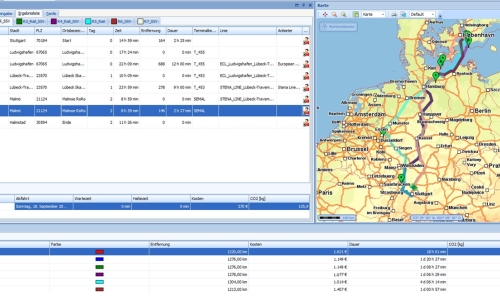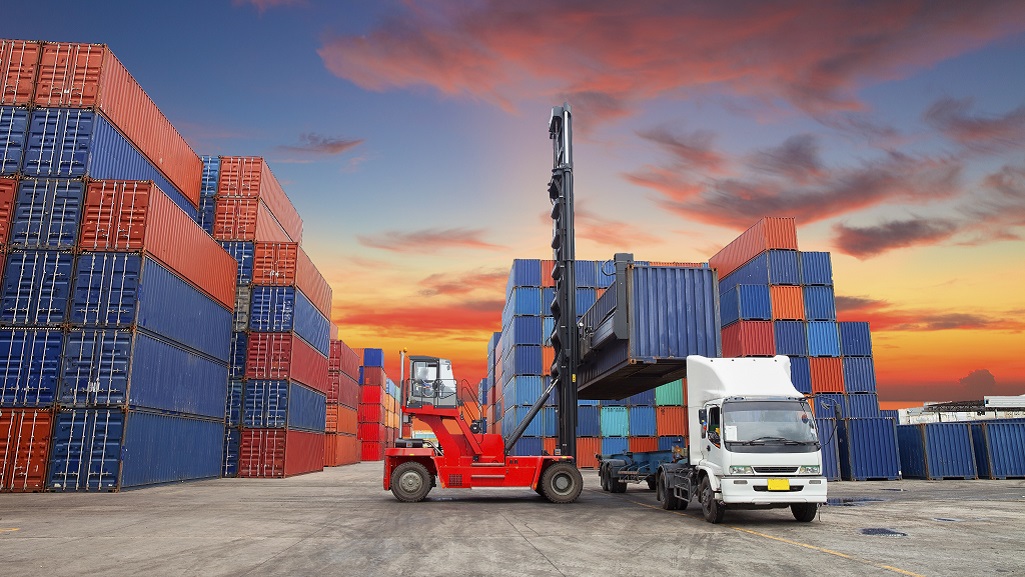Old hat? Intermodal transportation planning is as old as the logistics and transportation industry itself. In the digital age however, the topic has been given a new context. Neither country borders nor system limitations seem to be standing in the way of professional and intermodal transportation planning. Nowadays, transports can be planned and optimized right down to cost definition per kilometer and carbon footprint. What does the data basis look like and what challenges is intermodal transportation facing today?
The coherent shift of road transportation to modal alternatives remains one of the most important goals of our time. The challenge is to address road traffic problems on the one hand and ecological goals in freight transportation on the other. For Dietmar Flohs, Chief Technical Product Manager at the PTV Group, this is one of the main focuses of his work.
“Global goods flows and the demand for increasingly efficient transportation systems are caught between climate-political goals, on the one hand, and monetary transportation cost efficiency, on the other,” says Flohs. “The goal is to make transportation faster, more flexible, cheaper, more environmentally friendly and, in particular, to simplify processes – a major challenge and the expectation of many who are living in a globalized world.”
Florian Krietsch, Senior Project Manager at the PTV Group, adds: “Attributes such as environmental sustainability and cost efficiency can be very easily combined using intermodal transportation. However, as things stand today, there are still major obstacles in terms of the visibility, flexibility and, not least, in the acceptance of intermodal transportation.”
What has to be done to achieve an intermodal shift in transportation?
Krietsch knows: “Firstly, there must be an openness for a modal shift and for the additional expenditure in the organization of the transportation chain. In addition, close cooperation between various intermodal players in the chain is required.”
A lot of goods are transported by road; the journey times and costs are known, so why should this change? To put it simply: The transportation industry needs to find coherent and competitive intermodal connections. Data availability and accuracy as well as planning skills are the fundamental prerequisites for the definition of possible modal options per transportation section and, in addition, the orchestration of individual sections.
Today’s challenges in intermodal transportation
Yet at the same time, when it comes to today’s challenges in intermodal transportation, it is not all about the services: We also need to focus on the competition between the modes of transportation as well as between the service providers. “Those involved often oppose an extensive transparency of the service structures. Or transparent concepts cannot be implemented technically,” says Krietsch. “And a neutral overview, for example of the German or also European transportation services, is therefore often not possible.”
As it stands today, there is no central availability of all relevant intermodal data: In particular the timetables of intermodal services are not available in one place. Nor does this offer exist for individual modes of transportation, such as rail or inland waterways. On the contrary, there is a heterogeneous IT landscape of providers with various IT interfaces and degrees of maturity in their IT services: From a timetable which is displayed as image file on a provider’s website, and also only in the national language, right up to a sophisticated web service interface, which provides users with current timetables, status information and enables them to book services.
The current situation therefore requires relevant know-how and a specialization in the area of intermodality in order to be able to plan and implement competitive intermodal transport chains.
What should change in terms of “intermodal”?
In particular the shipper market expects simple handling and central availability of the transportation services from different providers.
Point 1: Visibility and availability
The visibility of intermodal services will be significantly enhanced with increasing digitalization of the transportation services. Krietsch explains: “With increasing digitalization, it will be possible to homogeneously display and compare the existing services. Today, shippers can plan their transports on the road and make a neutral comparison with possible intermodal alternatives. However, intermodal information should be available in one place or via a single interface.
Point 2: Intermodal as standard practice and maximization of the intermodal effects

The key factor here is: The intermodal option shouldn’t only be called upon in special cases, but should automatically be included in the planning process. This implies that the intermodal transportation service is integrated in the standard process of transportation and logistics planning, which would lead to further positive effects,” adds Krietsch. “For example, the bundling of various transportation orders from one or more shippers who are working together, the booking of pre-defined network routes or the consistent optimization of the overall transportation chain.”
Point 3: Dynamic systems
In road freight transportation, information on estimated arrival times, vehicle location and event data are comprehensively available today. The same standards should also apply to other means of transportation. Dynamic, current data on timetable-based services are seen as a prerequisite for the transfer of delayed or changed order parameters.
Perspectives for digital intermodality
When it comes to perspectives in digital intermodality, the two logistics experts at PTV agree: The pressure on the intermodal service companies in terms of the digitalization of their transportation services will continue to grow – for the benefit of shippers and possible freight volumes. In future, digitalization will contribute to the existing service being utilized as best as possible. At the same time, it creates incentives for intermodal providers to continue to expand their service.
Many companies have recognized the need to act and are already actively involved in working towards digitalization. Sebastian Ruckes, Manager Business Development at TX Logistik, reports: “In current projects such as in the EU project “FENIX”, we show the digital information flow of timetables integrated into cross-mode transportation planning in the Rotterdam-Genoa corridor. Even today, the know-how and the digital skills of all project partners such as the PTV Group and TX Logistik, are being included here.”
Not only in the future, but even today, intermodal transportation revolves entirely around digitalization. It will become the power behind the visibility of intermodal services, the rise in efficiency, lower transport costs and the modal shift in general. With modern software and technologies, companies such as the PTV Group are supporting this route of intermodality.
